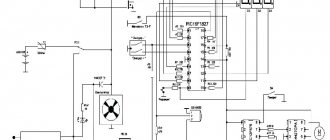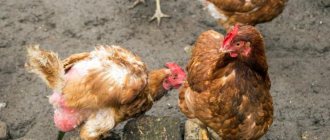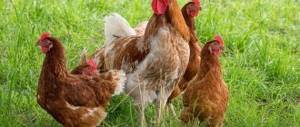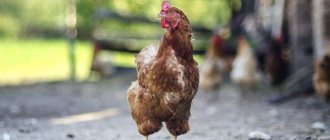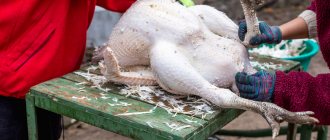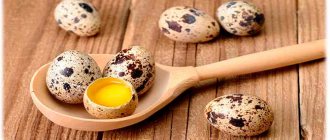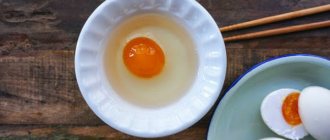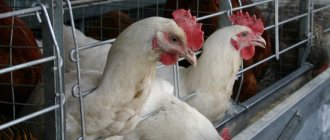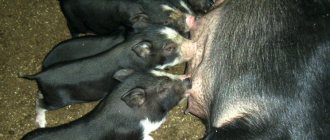General points
On a small farm or on a personal farm, using a laying hen as an incubator is a popular, economical and quite convenient way. The bird can completely replace an artificial incubator: it will turn the eggs so that they do not overheat, regulate the humidity in the nest, and can also provide care for the chickens.
But although a properly prepared and trained hen with a developed maternal instinct can be an excellent hen, if the enterprise is on an industrial scale, we strongly recommend that you acquire an incubator. This will greatly ease the hassle of breeding offspring.
It is recommended to plant chickens at home on eggs in the spring, since the warm summer period and the beginning of autumn are best suited for growing and maturing chickens.
If there is a need to plant several hens, you need to start the hatching process at the same time. At the same time, place the nests at a distance from each other so that the birds do not confuse them and do not conflict with each other on this basis.
Exit of young animals
From the 19th to the 23rd day, the farmer must control the process of hatching the young animals. If the chicks do not appear for a long time and squeak loudly, they need to be helped by breaking off the shell from the pecking site.
Be sure to read:
Milking a cow: manual and hardware methods, implementation features
If blood appears, the procedure for releasing the chicken should be stopped and it should be allowed to get out on its own. After the last chick emerges from the brood, the hen leaves the nest.
It should be remembered that after the first chicks hatch, the hen can abandon the remaining eggs. Therefore, chick hatching should be constantly monitored.
The further development of the released young consists of feeding and keeping them in a place inaccessible to predatory animals. The chicken, thanks to its innate maternal instinct, takes care of its offspring on its own.
How to choose a hen?
If there is a need for a live incubator, the first step is to find a hen suitable for this purpose. It is necessary to observe for some time the available population of birds suitable for incubation and select those that are most suitable.
A chicken with an awakened maternal instinct has behavior that differs from other individuals:
- she tries to sit in the nest for a long time, reluctantly leaving it;
- the bird clucks anxiously;
- the hen will also pluck her feathers to make a nest.
In addition, according to farmers, the best hens are birds aged two to four years. And the comb of a bird, ready for incubation, changes slightly in color, becoming pale pink.
The appetite of such an individual decreases, so sometimes the future hen has to be fed almost by force: otherwise the bird can lose a lot of weight.
A hen can be identified by the following feature: the bird looks for the most secluded and dark corners of the chicken coop, sitting in boxes, baskets, and other suitable places. The signs listed above make it possible to accurately select a hen.
The presence or absence of maternal instinct largely depends on the breed of chicken. Bantam and silk breed chickens are particularly prone to breeding offspring. These birds are able to hatch with equal zeal not only their own eggs, but also those of others.
Also, representatives of the following breeds are naturally good brood hens:
- Cochinquin;
- gate;
- Welsumer;
- Kuchin anniversary.
If you have chickens of these particular breeds in your poultry yard, there will be no problem with hatching eggs. In addition, outbred chickens are also excellent mothers and willingly sit on eggs. This amazing fact is explained by the fact that mongrel birds have strong instincts in principle, including the maternal one - they need it for survival.
It is interesting that a chicken with a developed maternal instinct calmly sits on eggs and birds of other breeds: turkey, goose, duck.
The maternal instinct is completely absent in the Highsex, the Hai Lan breed and some others. It is rare that the hen instinct manifests itself in hatchery hens. Cross-breed chickens, as well as hybrid breeds of the new generation, also rarely have maternal instinct.
Young hens are not often distinguished by a developed maternal instinct: they often abandon nests, throw eggs on the floor, and go away for a long time. To avoid such problems, young chickens are first placed on decoy eggs or store-bought eggs.
If a bird sits on a decoy clutch for several days, leaving only for a short time, most likely, it is already ready to sit on eggs as a full-fledged hen. An individual unsuitable for this purpose will leave the clutch within a couple of days.
How to identify a mother hen
Among other chickens in the poultry yard, special attention is drawn to the small size of the chickens, which gurgle and walk around the yard constantly ruffled. But, if you watch them more closely, the following differences will immediately catch your eye:
- Thinner appearance.
- Smaller size of earrings and comb.
- Bare belly.
Constantly sits in the nest, even when eggs are being collected, and at the same time tries to peck on the hand, showing aggression that is unreasonable at first glance.
These characteristic behavioral factors are the first signs that the hen is ready to hatch eggs . Such individuals begin to cluck , which is why they are often called hens or, in domestic use, hens.
Why does a chicken refuse to be a hen?
First of all, the reason for this is the absence, in principle, of maternal instinct in the female. This is the main reason.
In addition to this, the following factors can scare away the hen from fulfilling her maternal duty:
- an improperly equipped nest, uncomfortable and located in the wrong place;
- strong noise around the nesting site, other external stimuli;
- the light in the coop is too bright;
- close proximity to other hens and their nests.
Often a young hen is not ready for incubation.
Why drive away the hen?
When hens begin to prepare to breed offspring, the owners have to decide what to do with the hen. There are two options. It is customary for calm birds to leave eggs.
However, 9 out of 10 modern breeders opt for incubators, driving birds away from their homes.
There are several reasons for weaning chickens from incubation:
- While raising chickens, the hen stops laying eggs, devoting a long period to maternal duties. The chick may follow its mother for several weeks, reducing farm productivity.
- The hatch is capable of hatching fifteen chickens, the incubator is capable of hatching about a hundred chickens every month. The second option is more profitable for farmers who have passed state registration - they are interested in mass breeding of chicks.
- Additional costs are another reason for weaning chickens off brooding. The hen is transplanted into a separate room to protect the chicks from attack by adult birds.
- While hatching chicks, a laying hen can accidentally crush an egg, reducing the number of young animals.
- Birds are not always able to sit for the entire period, this leads to losses.
Due to the disadvantages of natural breeding of chicks, breeders are considering methods of weaning chickens from incubation.
Be sure to read:
Composition of grain mixture for laying hens and a recipe for how to make feed yourself
Planting methods
Let's look at the most popular methods of planting chickens on eggs.
Method of deception
If there is no female suitable for incubation in the entire chicken coop, you will have to use a trick. Place several eggs (decoys) in the nest and then watch the birds for a week. As a rule, there is always at least one hen who undertakes to hatch the laid eggs.
When the bird has already sat on the decoys and is firmly established, replace them discreetly with real eggs. However, the replacement must be done so that the hen does not suspect anything.
It is also important not to scare the bird. Therefore, place the eggs carefully behind the bird or wait until the hen leaves the nest to eat or drink.
Forced landing
You can force a chicken to sit on the clutch. However, there is nothing scary or life-threatening to the bird in this method. You just need to choose and arrange a suitable nest, located in a secluded, quiet place in the chicken coop. Egg decoys are placed in the nest and the bird is seated on them.
The cage with the nest must be locked to prevent the bird from getting out. Usually, after several days, the bird’s maternal instinct automatically turns on, and it continues to incubate real eggs.
If, nevertheless, the chicken is not ready to hatch, it must be replaced with another individual. But don’t take a young hen; it’s better to try to make an old or mature bird a hen.
Instead of a cage, you can cover the nest with the bird in a basin or basket, letting it out a couple of times a day for feeding and a short walk. Often, after sitting in a dark, closed place on the nest for several days, the chicken remains on the clutch.
It is better to plant the plant in the evening, after sunset. This recommendation is due to the fact that the atmosphere at this time will be muted, darkened and calm.
How to put a hen on eggs: expert advice
- To place a hen on eggs, first of all you need to take care of a separate place for her. To do this, you need to build a specially fenced off and darkened corner with partitions that will serve as protection from other chicken individuals. This place should be well ventilated and moderately warm.
- It is best to build a nest directly on the ground by digging a small hole and filling it with soft hay or straw. Then choose a bottomless box of suitable size and combine it with the dug hole to create a comfortable nest from which it will be convenient for the hen to go outside.
- Experts recommend initially forcing the brood hen to sit on dummies filled with sealant or paraffin. Such fillers most accurately correspond to the internal contents of a natural egg, which will be a good stimulation for future hatching.
- Evening is the best time of day to replace artificial eggs with real ones. The only condition in this case is the neatness of the lining, which can create a sharp contrast when changing hatched eggs. A careless substitution can cause mistrust associated with maternal instinct, and the hen will simply leave her home. And getting her to return will be quite problematic.
- If everything is done correctly and carefully, then the hen will calmly enter her nest, adjusting the eggs with her beak and wings, and gently sit down on her future offspring. Although, it is advisable to observe and control this process in order to avoid possible misunderstandings.
- The most enjoyable moment for any poultry farmer is the hatching of the chicks, which usually occurs at the end of the third week from the start of hatching the eggs. This amazing phenomenon brings with it a lot of positive emotions not only for the hen, but also for the owners. But not every hen can become a mother hen. It has long been noted that only those individuals that were hatched naturally and did not hatch from an incubator are endowed with this natural quality. Therefore, you need to take this circumstance into account when initially choosing a hen.
- Before laying a laying hen, you must first prepare fresh eggs, selecting the highest quality ones. It is also important to remember that for the correct and healthy development of future chicken offspring, it is necessary to take into account quantitative indicators, that is, place no more than 12 eggs under one chicken.
- When choosing a hen, first of all you need to focus on egg and meat breeds of chickens, since broilers are absolutely not suitable for this mission.
- Before placing the hen on the masonry, she must be in an absolutely calm state. Therefore, the best time for this would be the evening after feeding. And in order for her to completely calm down and sit on her eggs, you need to cover her with a basket.
- At the beginning of hatching, it is necessary to release the hen at least once a day for feeding, which should consist of clean water and whole grains.
- After four days, you don’t need to use the basket for laying eggs, since the chicken itself will already enter the incubation mode and will leave the clutch only in case of quick feeding or small preventive procedures in the form of ash baths.
- If crushed eggs are found, they should be immediately replaced with new ones, but this can only be done in the first few days of incubation.
- A week after the hen starts laying eggs, it is recommended to check them with an ovoscope at a time when the hen is not there, so as not to create a stressful situation for the expectant mother.
The process of raising chickens under a home hen is a useful and interesting activity for any poultry farmer. Watching the hatching of yellow-throated chicks, while showing special care and love, you involuntarily become a participant in an amazing event, like the birth of a new, even chicken, life. And the economic benefits begin to fade into the background when you start messing with these little creatures. And in order for these youngsters to turn into a healthy generation, you need to invest a lot of effort and warmth, which will be the key to their good development.
Preparing the eggs
In order for the chicks to hatch safely, the choice of the hen is not enough. You also need to select and prepare the eggs correctly.
It is best to lay an odd number of eggs, since in this case they will be more conveniently distributed in the nest. The optimal quantity is 11-15 pieces. Look at the size of the hen: under a small bird you should put a smaller one, a large one can hatch 17 pieces.
It is better to choose medium-sized eggs rather than large ones. Large eggs often contain two yolk embryos, but in small eggs the embryo may be underdeveloped and defective. Their shell must be strong. Take eggs only from an adult bird that is healthy and strong.
It is very important that the eggs are fresh: no more than five days should pass from the moment of laying to the start of hatching. From laying to laying in the nest, eggs must be stored at a temperature of +15-20 degrees: they cannot be frozen or kept at too high a temperature.
Before laying, carefully inspect the eggs - there should be no dirt or parasites on them. After external inspection, check with an ovoscope to identify and reject non-viable ones.
The eggs are laid out in only one layer so that the hen's body covers them on all sides.
Arrangement of the nest
The nest in which the hen will hatch her chicks must be prepared in advance. And after the bird has already settled on it, it will gradually independently make the place more cozy and comfortable. You can use a cardboard box, a wooden box, or a shallow basket as a container for the nest.
Raise the corners of the container to prevent eggs from rolling out from under the bird. And in front of the nest, hang a canopy made of light fabric to create maximum privacy and a calm environment for the bird. The canopy should not interfere with the bird’s access to the “house”.
The nest should be located in a secluded and dark place on a small hill so that small rodents cannot reach the eggs.
As for size, the chicken should be located comfortably and freely in the nest. However, there is no need for a nest that is too spacious—the eggs may roll out of it. The optimal parameters are 55x35 cm.
Inside it is necessary to form a soft bedding in the shape of a concave cup from bird fluff and dry straw. Eggs are placed in the recess of the cup. It is also necessary to treat the litter with a special compound that protects against parasites; ash or naphthalene scattered along the bottom of the nest will also work.
Make sure that the air temperature in the chicken coop when incubating eggs does not fall below +20 degrees. Humidity must be maintained at 70-78%.
Caring for a hen
In order for chicks to hatch safely, it is necessary to properly care for the chicken during the incubation period. Next, we'll go through all the important points.
Temperature
A very important aspect for hatching eggs. It is necessary to ensure that the air temperature in the chicken coop does not fall below +15 degrees. The ideal range is +15-20 degrees.
Walks
The chicken should not be constantly on the eggs. Make sure that the bird leaves the nest at least once or twice a day to eat and drink. In addition, the kitten should also walk and stretch its legs. During the first days, do not disturb the bird, but starting from the fourth or fifth day, if the hen refuses to leave the nest, you need to help her.
If the bird does not want to leave the nest in its own water, it is necessary to remove it from the eggs by force. While the hen is away, cover the eggs with cloth or straw: this must be done so that no other bird will sit on the nest in the absence of the hen.
If the “real mother” returns and finds someone else’s hen “at home,” a fight cannot be avoided.
The duration of the walk is 15-20 minutes, which is quite enough. And again, if the hen does not want to return to the eggs, help her and force her into the nest.
We recommend cleaning the cage and nest while the bird is away. Inspect the laying site and remove broken eggs, if any. Sometimes a chicken throws unusable eggs onto the floor - they also need to be collected, then cleaned the floor.
But after removing the defective eggs, you should not add new ones - the chicken will notice the substitution and may refuse to sit on the nest any longer.
Feeding
Place a feeder and water bowl near the nest. The bird should be able to leave the laying site for a short time in order to get enough. The hen is fed with compound feed, chopped root vegetables, fresh grass or hay. Woodlice is a good choice as green food.
About a week before the chicks are expected to hatch, the chicken should be fed heavily. The recommendation is connected with the fact that by the time the offspring appear, the bird should be in good shape, become more resilient and strong. She will need strength to properly care for her numerous and active offspring.
Hygiene
Place a container with wood ash or sand near the nest. A wooden box or a regular bucket works well as a container.
The bird will be able to bathe in loose filler, thereby cleaning its feathers from dirt and parasites. However, if the parasite infestation is severe, sand and ash baths will not be enough. In this case, the hen will have to be treated with special preparations.
So, we found out how you can put a chicken on eggs. In principle, the work is not difficult - in any chicken coop there is usually a female who can become a full-fledged hen.
If there is no such individual, the article provides simple ways to force a bird to hatch its offspring. The main thing is to be patient and arrange the nest correctly, and after a short time everything will definitely work out.
Traditional methods
Poultry should be doused with cold water only in warm weather.
Previously, farm production was predominantly extensive, and folk methods helped to wean chickens from sitting on eggs:
- spraying with cold water;
- darkness;
- hunger;
- plate with water.
The effectiveness of the methods has been proven by many years of experience.
Cold water
When the whooping whale shows aggression, clucks, and sits on the eggs, breeders spray the chicken with cold water or, alternatively, dip it in a basin.
You need to keep the chicken in the water for about five minutes. This is exactly how long it will take for the hen’s body to cool down. A decrease in body temperature, and not stress, as is commonly believed, discourages the bird from sitting on eggs.
This procedure should be repeated every time the bird sits on the eggs. This will allow the body to develop the ability to cool the hen's body every time she sits in the nest.
Attention: you should pour cold water over the bird only in warm weather, otherwise the chicken can easily catch a cold.
Darkness
Placing the hen in a dark, cool place solves the problem of brooding. The bird is placed in a darkened room, barn, closet, basement.
Breeders with small farms place the laying hen under a box, box, or basket, placing a weight on top. The bird is kept in the dark for two to three days.
Important! The chicken is fed in a large room. If she sits under the box, then you don’t have to feed the bird until she returns to the chicken coop.
Starvation diet
Another effective way to interrupt the brooding process is a starvation diet . The birds are kept in a separate room for three days and are not given food. When the hen stops clucking, she is transferred to a common chicken coop.
Important! When choosing a starvation diet as a punishment, you need to take into account: a hunger strike depletes the bird’s body, which means that the chicken’s egg production will decrease for a short time. But with a return to normal feeding, the size of the egg laying will increase.
Plate with water
Another effective way to interrupt the brooding process is a starvation diet.
If the owner does not have time to notice signs of readiness for breeding, a plate of cold water will help. When the chicken sits in the nest, it is driven away, and instead of the eggs it warms, a plate of water is placed.
Be sure to read:
How to check eggs for freshness: methods of determination for raw and cooked products
At first, the bird will be in the nest, rinsing its paws, but then, having calmed down, it will leave the chicken coop.
Important! A plate of water helps to dissuade the bird from the nest for a short time: after a while the hen will sit on the eggs again.
